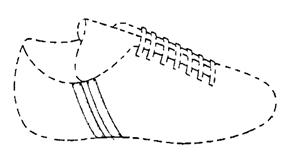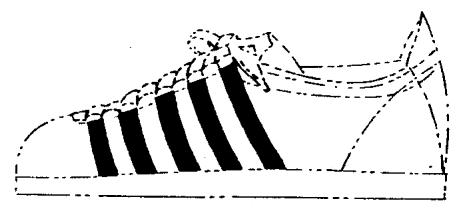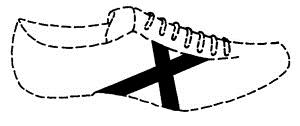Jima Project’s two parallel stripes on sport shoe: General Court confirms lack of distinctive character for basic geometric shapes
The General Court (GC) upheld the European Union Intellectual Property (EUIPO) Board of Appeal’s decision, affirming that the following figurative sign lacked inherent distinctiveness.

In its judgment the General Court sheds further light on the requirements for inherent distinctiveness of figurative marks on the side of shoes.
At the core of the case lay the figurative mark consisting of two parallel stripes, registered for “footwear, including sports footwear” in class 25.
The General Court upheld the EUIPO Board of Appeal’s decision, reaffirming the principle that simple geometric shapes must significantly deviate from industry norms to qualify as trade marks.
Background
Jima Projects (Jima) applied for the contested mark in 2002 which was registered in 2020 only, in order to be attacked straightaway by Eli Salis Sulam due to lack of inherent distinctiveness. The Cancellation Division of the EUIPO agreed, declaring the mark invalid. This decision was later upheld by the Board of Appeal, prompting Jima to appeal to the General Court.
Relevant public’s level of attention
In the first plea, Jima argued that consumers pay particular attention to simple markings because it is common practice to place relatively simple elements on the sides of shoes to indicate commercial origin.
The General Court rejected this argument, emphasising that sports footwear is an everyday consumer product aimed at the general public, whose level of attention remains average.
Despite the market trends involving simple design elements to signal brand origin, the General Court found no evidence that consumers automatically associate such designs with specific manufacturers. The General Court further clarified that a higher level of consumer attention does not necessarily mean that a sign with weaker distinctive character is sufficient to indicate commercial origin.
Distinctiveness
For a mark to possess distinctiveness, it must enable consumers to identify goods as originating from a specific undertaking. The General Court concluded that the two stripes failed to meet this criterion for the following reasons:
- Indistinguishable from the product: The contested mark could not be dissociated from the shape of the product itself. Such signs are only distinctive if they significantly depart from the norms or customs of the sector.
- Lack of striking features: Jima argued that the mark featured two distinctive slanted stripes on the side of a shoe, distinguishing it from simple geometric shapes. However, the General Court found that the mark resembled basic geometric shapes, specifically parallelograms, which lack any distinctive character.
- Branding trends do no not influence consumer perception: The General Court rejected the argument that the relevant public perceives the contested mark as a badge of origin merely because it is placed on the side of a shoe. While it is common practice for manufacturers to affix marks to the sides of shoes, this alone does not demonstrate that consumers automatically associate such signs with specific manufacturers.
Implications of the judgment
This judgment aligns with the General Court’s established case law regarding figurative or positional marks on the sides of footwear.
For instance, in the K-Swiss case (T-3/15), the registration of five stripes on the side of a shoe was refused due to a lack of distinctiveness.

The General Court held that the five stripes were indistinguishable from the shape of the product itself.
Further, placing decoration on the sides of shoes was considered common in the sector such that the stripes would be simply viewed as an embellishment and not an indication of origin.
In contrast, in the Deichmann case (T-117/21), the distinctiveness of a cross mark on the side of footwear was upheld.

Here, the General Court concluded that the evidence submitted failed to demonstrate that crossed lines are common in the industry and, therefore, could not substantiate the claim that the mark lacked distinctive character.
The Jima Projects case aligns more closely with the K-Swiss decision. It reaffirms the principle that, to be registrable, a sign must significantly depart from the norms or customs of the sector when it cannot be dissociated from the product itself. A certain practice itself does not render a basic sign distinctive.
Case details at a glance
Jurisdiction: European Union
Decision level: General Court
Parties: Jima Projects v EUIPO
Citation: T‑307/23
Date: 23 October 2024
Decision: dycip.com/jima-projects-t30725

